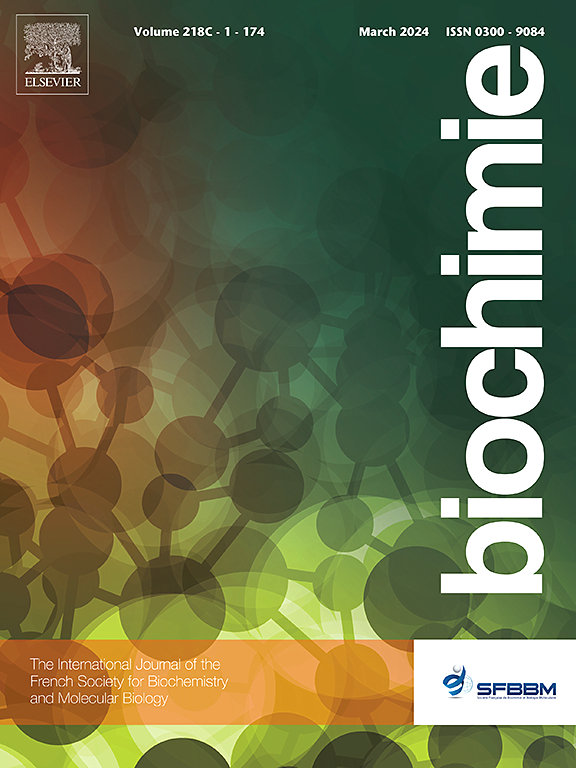细胞外囊泡作为 MASLD 中内分泌干扰物生物标志物的潜在来源:DEHP 案例简评。
IF 3.3
3区 生物学
Q2 BIOCHEMISTRY & MOLECULAR BIOLOGY
引用次数: 0
摘要
代谢功能障碍相关性脂肪性肝病(MASLD)是一种慢性疾病,发病率越来越高,需要非侵入性的生物标志物。众所周知,环境内分泌干扰物(EDs)与脂肪肝的发病和进展有关,目前正在开发监测其对肝脏影响的检测方法。细胞外囊泡(EVs)介导细胞间的交流,其内容物反映了释放EVs的细胞的病理生理状态。因此,它们可以作为肝脏病理状态和暴露于 EDs 的生物标志物。在这篇综述中,我们介绍了DEHP(邻苯二甲酸二(2-乙基己酯))与MASLD之间的关系,并强调了EVs作为DEHP暴露及其导致的MASLD进展的生物标志物的潜力。本文章由计算机程序翻译,如有差异,请以英文原文为准。

Extracellular vesicles as a potential source of biomarkers for endocrine disruptors in MASLD: A short review on the case of DEHP
Metabolic dysfunction–Associated Steatotic Liver Disease (MASLD) is a chronic disease with increasing prevalence and for which non-invasive biomarkers are needed. Environmental endocrine disruptors (EDs) are known to be involved in the onset and progression of MASLD and assays to monitor their impact on the liver are being developed. Extracellular vesicles (EVs) mediate cell communication and their content reflects the pathophysiological state of the cells from which they are released. They can thus serve as biomarkers of the pathological state of the liver and of exposure to EDs. In this review, we present the relationships between DEHP (Di(2-ethylhexyl) phthalate) and MASLD and highlight the potential of EVs as biomarkers of DEHP exposure and the resulting progression of MASLD.
求助全文
通过发布文献求助,成功后即可免费获取论文全文。
去求助
来源期刊

Biochimie
生物-生化与分子生物学
CiteScore
7.20
自引率
2.60%
发文量
219
审稿时长
40 days
期刊介绍:
Biochimie publishes original research articles, short communications, review articles, graphical reviews, mini-reviews, and hypotheses in the broad areas of biology, including biochemistry, enzymology, molecular and cell biology, metabolic regulation, genetics, immunology, microbiology, structural biology, genomics, proteomics, and molecular mechanisms of disease. Biochimie publishes exclusively in English.
Articles are subject to peer review, and must satisfy the requirements of originality, high scientific integrity and general interest to a broad range of readers. Submissions that are judged to be of sound scientific and technical quality but do not fully satisfy the requirements for publication in Biochimie may benefit from a transfer service to a more suitable journal within the same subject area.
 求助内容:
求助内容: 应助结果提醒方式:
应助结果提醒方式:


